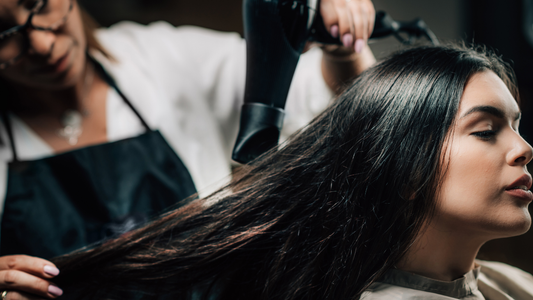Achieving the perfect results from a keratin treatment involves more than just applying the product; it requires precise timing to ensure the treatment has enough time to bond with the hair without causing damage. The Kera Mane Keratin Hair Treatment is designed to be safe and effective, but like all hair treatments, the time it remains on your hair can vary depending on your hair type and the results you’re aiming for. This guide provides detailed insights into how long you should leave the keratin treatment in your hair, tailored to different hair types and desired outcomes.
Understanding Keratin Treatment Processing Time
The processing time for keratin treatments can significantly affect the final results. Leaving the treatment on for the right amount of time can make the difference between beautifully smooth hair and a less effective outcome. Here’s how to determine the optimal timing for your specific hair type:
1. Fine or Lightly Damaged Hair
- Characteristics: Fine hair is more susceptible to protein overload, which can make it feel stiff and brittle.
- Recommended Time: For fine or lightly damaged hair, a shorter processing time is often sufficient. Typically, 15-20 minutes will allow the keratin to bond effectively without overwhelming the hair.
- Reasoning: This time frame minimizes the risk of over-saturation, maintaining the hair’s natural volume and avoiding any flatness.
2. Medium to Thick Hair
- Characteristics: This hair type can handle more protein and usually benefits from a longer treatment time.
- Recommended Time: For medium to thick hair, 20-30 minutes is ideal. This allows the keratin to penetrate more densely packed hair fibers thoroughly.
- Reasoning: A slightly longer duration ensures that the keratin has ample time to seep into thicker strands, providing a smoother finish and longer-lasting results.
3. Coarse, Curly, or Highly Textured Hair
- Characteristics: Coarse or highly textured hair often requires the most intensive keratin treatment due to its naturally higher frizz and tangle propensity.
- Recommended Time: 30-40 minutes may be necessary for these hair types.
- Reasoning: The extra time allows the keratin to fully saturate each strand, effectively managing frizz and providing significant smoothing and straightening effects.
4. Severely Damaged or Chemically Treated Hair
- Characteristics: Severely damaged hair includes bleached or frequently colored hair, which might be overly porous.
- Recommended Time: Careful consideration is required here; around 20-25 minutes is recommended but closely monitor the hair’s response to the treatment.
- Reasoning: While damaged hair needs intensive repair, overexposure to protein can lead to brittleness. Adjust the time based on how the hair absorbs the treatment during application.
Additional Tips for Timing Keratin Treatments
- Monitor Hair’s Response: Throughout the application, keep an eye on how your hair is responding. If your hair starts to feel too stiff or hard, it might be time to rinse out the product sooner than planned.
- Consult with Professionals: If you’re unsure, consult with a hair care professional before applying the treatment to determine the most suitable duration for your hair type.
- Post-Treatment Care: Regardless of hair type, avoid washing your hair for at least 48 hours after applying the keratin treatment. This allows the keratin to fully set and bond to the hair cuticles.
Conclusion
Timing is a critical component in the success of a keratin treatment. By understanding the needs of your specific hair type and adjusting the duration of your Kera Mane Keratin Hair Treatment accordingly, you can maximize the benefits and enjoy smooth, frizz-free hair. Remember, each hair type is unique, and finding the right balance for your treatment time can lead to the best possible outcomes.




